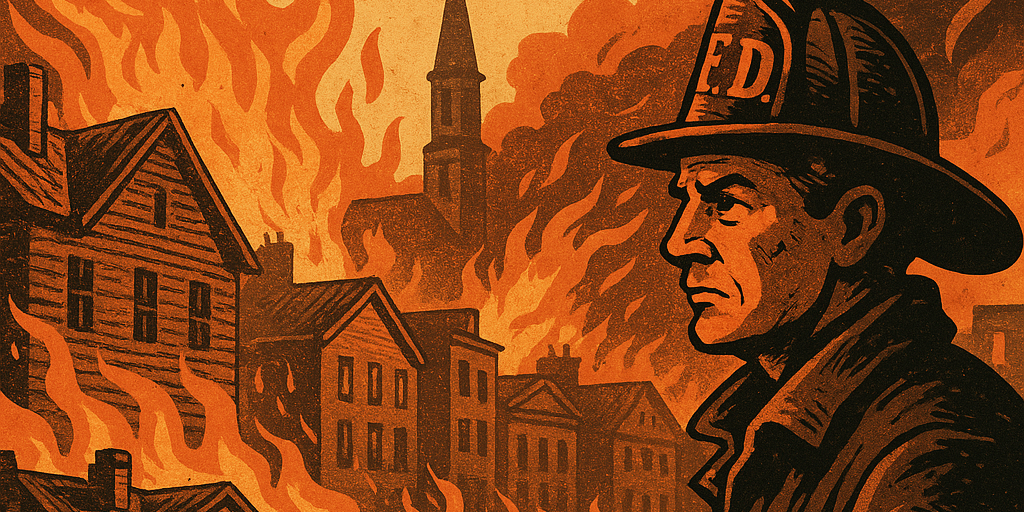On April 10, 1845, a seemingly ordinary day in Pittsburgh turned catastrophic when a single spark ignited a fire that would level over a third of the burgeoning city. Known as the Great Fire of 1845, this inferno changed the trajectory of Pittsburgh forever, transforming both its infrastructure and identity.
A City of Wood and Flame
At the time, Pittsburgh was a growing industrial town built largely of timber. Brick and stone structures were rare, and the narrow streets were filled with wooden sidewalks, bridges, and homes packed tightly together. Add to that the dry conditions of an unusually warm spring, and the stage was set for disaster.
The fire reportedly began in a small icehouse owned by Colonel William Diehl, located on Ferry Street near Second Avenue. A maid was heating wash water, and in a tragic moment of negligence, the flames escaped. Carried by strong winds, the fire spread rapidly—engulfing entire blocks within minutes.
Devastation in the Heart of Industry
Despite the efforts of the under-equipped fire brigade, the blaze raged out of control for nearly 18 hours. Over 1,200 buildings were destroyed, including homes, businesses, churches, and factories. Property damage was estimated at over $9 million—roughly $300 million in today’s dollars.
Much of the destruction occurred in what is now downtown Pittsburgh, near present-day Grant Street. Entire families were displaced, their livelihoods reduced to ashes. However, this wasn’t just a story of tragedy—it marked the beginning of a transformation.
Rebuilding with Iron, Brick, and Resolve
In the wake of the disaster, Pittsburgh did what it has always done: rebuild stronger. City leaders banned the construction of wooden buildings downtown, encouraging the use of brick and iron. This moment is considered the true beginning of Pittsburgh’s architectural resilience.
The catastrophe also spurred the creation of a more modern fire department and led to better urban planning. This transformation set the foundation for Pittsburgh’s industrial boom in the decades to follow—covered in our article on the Rise and Fall of Pittsburgh’s Steel Industry.
Cultural Impact and Forgotten Legacies
The Great Fire may be rarely discussed today, but its legacy lives on. Some buildings that rose from the ashes, like the Trinity Cathedral, still stand as a testament to Pittsburgh’s ability to endure. Streets that were redesigned during the rebuilding efforts form the grid of downtown today.
Curious to explore more hidden chapters of the city’s story? Read about The History of the Pittsburgh Railroads and Union Station or How the Glass Industry Made Pittsburgh the Glass City.








